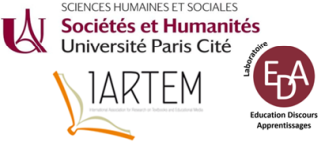In France, teachers are free to choose and design the teaching aids they offer their pupils in class (Choppin, 2005). They can select one or more textbooks or other resources (teacher blog entries, documents proposed by the institution, etc.) and decide whether or not to modify them. This presentation focuses on this out-of-class teacher work. More specifically, we ask: how do the CM1-CM2 teachers appropriate textbooks and other educational resources? What influences this appropriation ? Through these questions, we intend to provide a better understanding of the instrumental activity of teachers, while at the same time looking at what might, during this activity, lead to the fuelling or reduction of social learning inequalities.
Firstly, analysis of the responses to a questionnaire involving 511 CM teachers shows that two-thirds of them transform resources. As for the remaining third of teachers, 50% of them use a textbook as proposed by the publishers for their spelling lessons and 33% for their history lessons. The textbook, a tool "constructed with a certain epistemological coherence" (Margolinas & Wozniak, 2010, p. 244), is therefore rarely on the students' table, given that when it is used as is, it often takes the form of photocopies in the classroom.
Secondly, an analysis of 346 media - which some of the respondents sent in via the questionnaire - reveals that when appropriating resources, teachers act more on form/presentation than on content. This appropriation then has repercussions on the internal characteristics of the media. It reduces the semiotic and linguistic complexity of the resources (especially those offered by publishers), making it easier for all students to process the content. At the same time, however, it reduces the demands of the proposed activities. In this way, teachers' transformations have consequences for students' intellectual activities, and probably for their learning as well. So it's vital to understand more about what encourages teacher changes.
The field survey (16 sessions observed and 14 teacher interviews) reveals the logics and, above all, the constraints underlying teacher modifications. During the preparatory work, teachers decomplexify the resources by deleting elements or splitting the resource into several media in order to implement 3 logics:
- planning logic, as it is imperative to reduce the session and sequence time proposed by a resource,
- the logic behind the design and implementation of the learning situation. For example, during the first session, to let students build their own knowledge, teachers remove the lesson that is often visible in textbooks.
- logics linked to the school's material constraints. Textbooks are often obsolete, and the number of photocopies per teacher limited. Teachers therefore ensure that the content of the resource can be reproduced in black and white on an A4 sheet of paper, with a certain visual quality.
These three logics of instrumentalization lead to resource modifications that push teachers to give priority to the form of the support to the detriment of the didactic content. These logics are intertwined with institutional injunctions. Indeed, certain injunctions predominate in the profession : the permanent injunction to adapt (Stiegler, 2019), the injunction to get involved and the injunction to create/innovate (Tralongo, 2021). The government is careful not to explain why and, above all, how to comply with these injunctions (ibid.). To illustrate this, our interviewees explain that trainers (due, in particular, to the CRPE exams) and inspectors are pushing to criticize and modify resources, yet they lack the training to do so.
- Poster

 PDF version
PDF version

